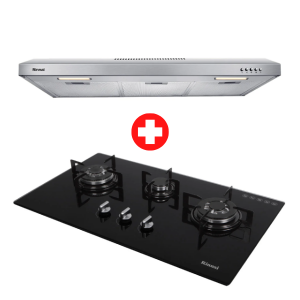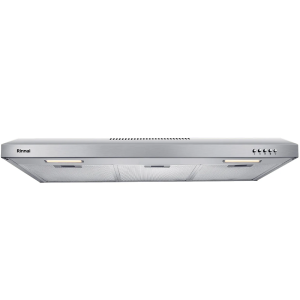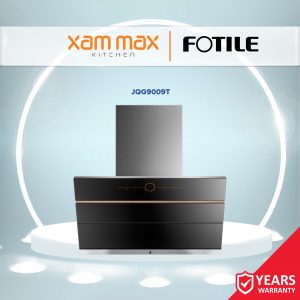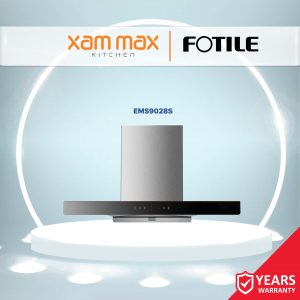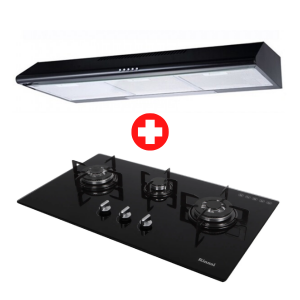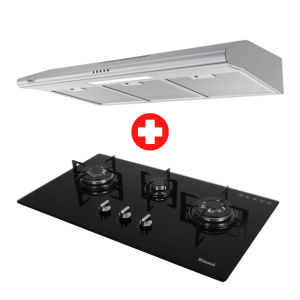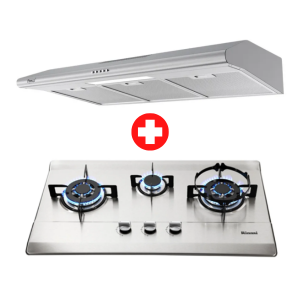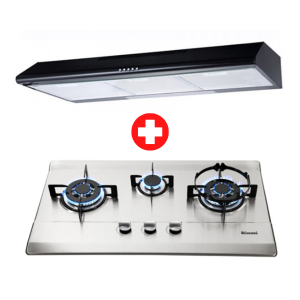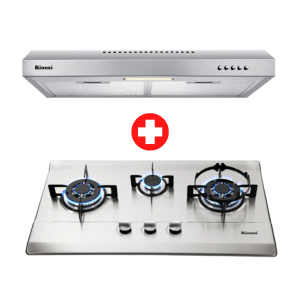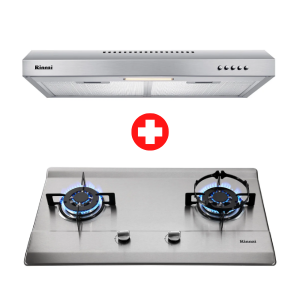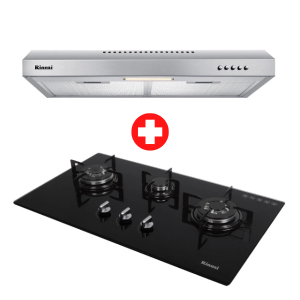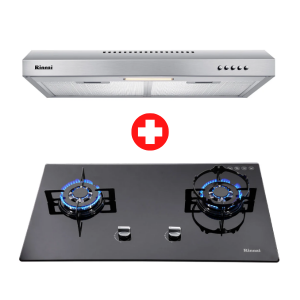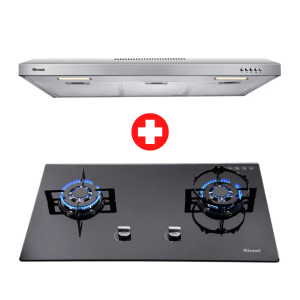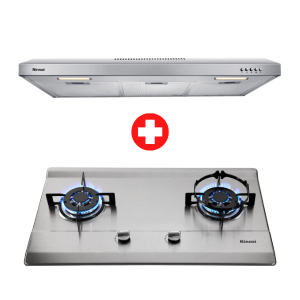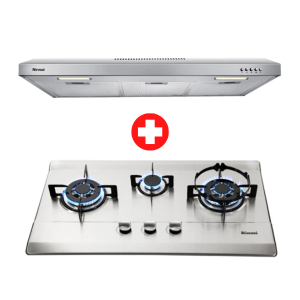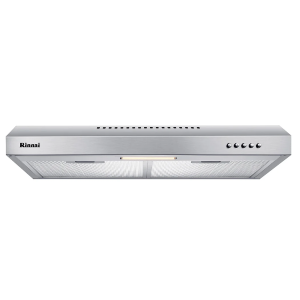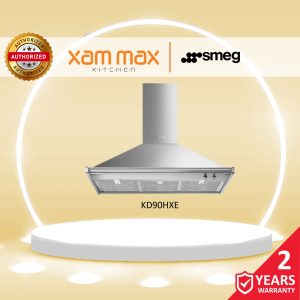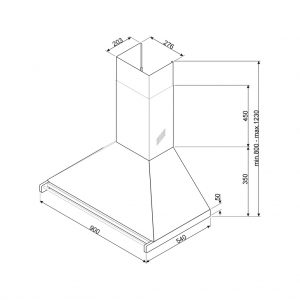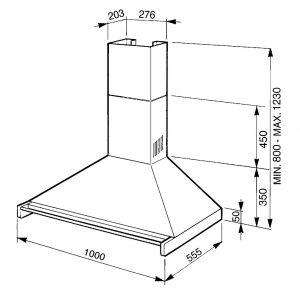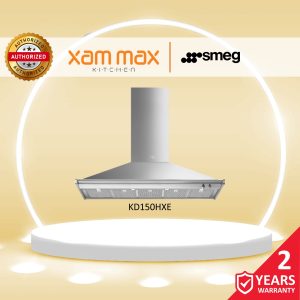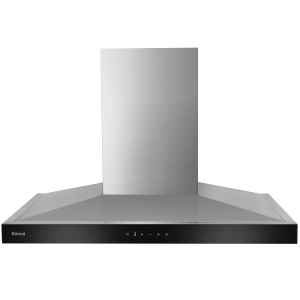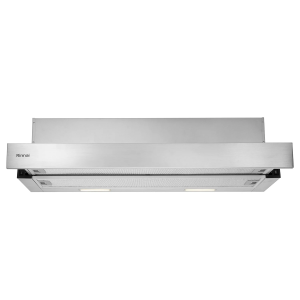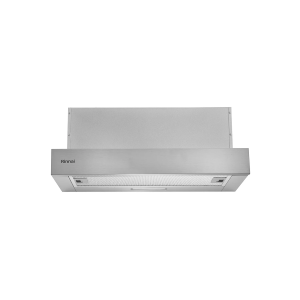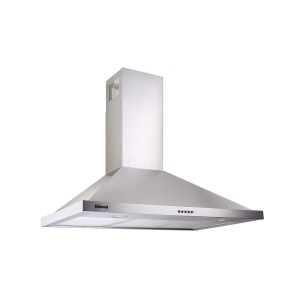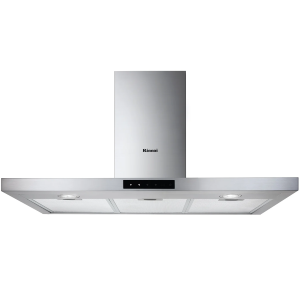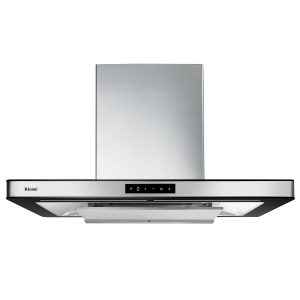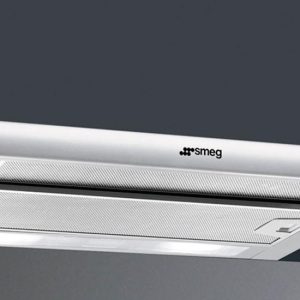Kitchen Hoods
Browse the latest kitchen hood models and cooking technologies now. We have a huge selection of cooking hoods in Malaysia that take care of the grease, smoke, and smell.
Whether you are looking for chimney hoods, slim hoods, island hoods or other types of kitchen hoods, our online customer support team is here to assist you.
Showing all 39 results
Buying Cooker Hoods in Malaysia – Quick & Simple Guide
Is a cooker hood really necessary?
As you cook, a cooker hood removes excess smoke, steam, grease and fumes while in the kitchen. A good kitchen hood will make your kitchen and household smell fresh and clean.
Simple Cooker Hood Choices
Space: retractable cooker hoods are suitable for smaller kitchens, whereas canopy cooker hoods are suitable for larger kitchens.
Venting: A ducted cooker hood vents outside the house, whereas a recirculating cooker hood filters air and vents it back into the house.
Suction: Look for fans with multiple speeds. Extraction rates exceeding 600m3/hr are considered powerful.
What Are the Different Types of Cooker Hoods?
You should know the 5 types of cooker hoods below before choosing the right one for your kitchen:
1. Built-in Cooker Hoods
It is compact and great for a standard kitchen setting. It fits perfectly with a narrow hob between 52cm and 60cm wide.
2. Chimney Cooker Hoods
A chimney cooker hood will be perfect if your cooker is backed up against a wall. They come with a canopy and a chimney, which can either be steel or glass.
3. Freestanding Cooker Hoods
Despite being inexpensive, it is not as powerful as a freestanding cooker hood. This cooker hood is mounted directly on the wall over your hob.
4. Integrated Cooker Hoods
The integrated cooker hood is an ideal solution for those who want to save space or wish to conceal their cooker hoods. You can install a small cooker hood directly on the kitchen units. In comparison to the former, integrated hoods are less powerful.
5. Island Cooker Hoods
This island hood will be perfect if you’re looking for a more sophisticated solution for your kitchen hood. It attaches directly to the ceiling and adds a touch of modernity and professionalism.
What Features Should My Kitchen Hood Have?
You need to choose the correct specifications once you have determined what type of cooker hood you need for your kitchen, such as:
- What is the width of your cooking area?
- What is the best height to mount it at?
- Suction power: to remove all pollutants, the fan must be powerful.
- Ventilated or recirculated: Can you pipe the smoke outside?
- Filtration method: How do oils and grease be trapped?
- When switched on at full power, is it noisy?
- What is the recommended frequency of maintenance?
- Does it match the overall design of your kitchen?
- What is the right size for you?
Make sure the cooker hood covers the entire cooking area above your stove or hob. Their widths are usually 600mm or 900mm.
What is the Best Power Level for a Kitchen Hood?
In a kitchen hood, suction power is determined by how much air it can move in a given period of time. A kitchen hood’s airflow will depend on how powerful the fan motor inside the hood is and how much electricity it consumes when you switch it on. It is expressed in cubic meters per hour (m3/hr).
You may need a kitchen hood with a higher airflow flow rate if you do a lot of heavy cooking, such as stir-frying with a wok or deep-frying.
When set at full speed, wall-mounted kitchen hoods produce about 1850 to 1200 m3/hr of airflow. They consume around 200 to 300 watts.
Slim hoods have a maximum airflow of around 500m3/hr, while island hoods run at a maximum of 1450m3/hr.
Recommendation: Choosing a hood with the highest suction power isn’t always a good idea. Different brands may have other features that make pulling in the smoky air easier.
What is Better, a Recirculating Hood or a Ventilated Hood?
Using a ventilated kitchen hood with an exhaust pipe to the outside can remove smoky air from your kitchen, which is one of the most effective ways.
Your contractor will need to make a hole in your kitchen wall. The hole size varies depending on the brand but is generally 17 cm in diameter.
However, if you live in a condo or apartment, you can’t really drill holes in your walls, so you’ll need a recirculating hood.
Connecting an exhaust pipe can convert recirculating hoods to ventilated ones in most kitchens.
Recommendation: A ventilated hood is better if you live on landed property. A recirculating hood is better if you don’t have an exhaust hole, and you should pay greater attention to good filtration, such as one with a high-efficiency rating.
Noise
Many modern kitchen hoods use advanced aerodynamics to reduce noise, and some models are advertised as “silent.” When a kitchen hood runs full power, the fan’s noise can be unbearable.
A full-power kitchen hood will have a noise level of around 52dB. In comparison, a vacuum cleaner runs at roughly 70dB, the same as a hairdryer.
The sound level of some kitchen hoods that some companies advertised as “silent” is about 44dB (the noise level of a library).
Nevertheless, a dirty mesh filter can increase the noise level, causing the fan to work harder to maintain the airflow.
Recommendation: It is advisable to choose a quieter kitchen hood if you have an open kitchen. The suction fan’s noise may disturb those in the dining or living area.
Installation
Kitchen hoods cost about RM300 to install. You may need to cut a hole in your wall to install the ventilation exhaust pipe, which can cost up to RM500.
For ventilated hoods, the exhaust ducting is limited to 10 ft. Smoke piping that requires more than 10 ft of piping will cost more. Long piping can also affect suction power, which may not be adequate if it is too long. Considering kitchen hoods with an auto-turbo function may be a good option in such situations.
What is the Recommended Height for the Cooker Hood?
Cooker hoods should be low enough to trap cooking smoke but not so low that they block your view.
A slanted hood should be at least 29 cm high, and a standard wall-mounted hood should reach 65 cm – 75 cm high from the tabletop.
To prevent the filtered air from blowing back into your face and hair, if you are tall and have a recirculating kitchen hood, you may want to mount it higher. A kitchen hood should not be placed more than 75cm above the cooker hob. It may be ineffective if you mount it too high.
The height of your ceiling is also something to consider. If your ceiling is very high, the outer ducting you install will not reach the hood chimney.
Maintenance
In general, you should clean your kitchen hood after every cooking session. Also, make sure the canopy tray and chimney are clean.
Reattaching baffle filters to hoods requires lubricating them, emptying them, and wiping them thoroughly.
It is also essential to thoroughly clean the filters every 2 to 4 weeks. Remove and soak them in hot water with a cleaning solution for 10 minutes. After that, brush them to remove grease (do not use steel wool or other abrasive brushes). Finally, replace them on the hood.
Bustle filters are undoubtedly easier to clean and look as good as new ones afterwards. However, mesh filters may continue to accumulate clogs unless you clean them thoroughly. As well as cleaning the blower fan once a year, as the manufacturers recommend it. Depending on its model, it may be necessary to disassemble the kitchen hood.
Recommendation: Make sure the brand you choose offers good after-sales support. You’ll be glad to know that it’s easy to service if you need spare filters or the touch screen doesn’t work.
Buying a Cooking Hood – Conclusion
Cooking a meal doesn’t mean you have to clean up the kitchen every single time. Every home should have a kitchen hood because it removes grease, smell and harmful smoke.
Check out XAMMAX’s selection of hoods and other kitchen appliances if you want a great bargain!

